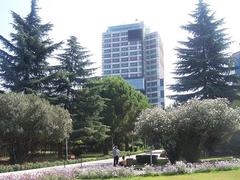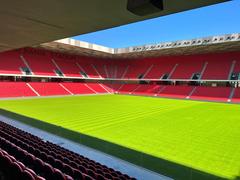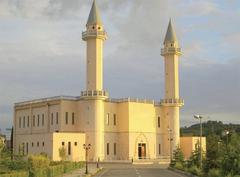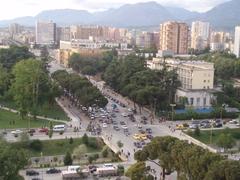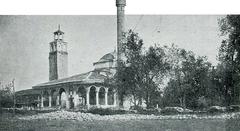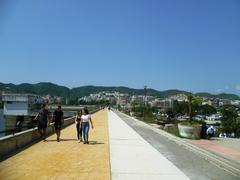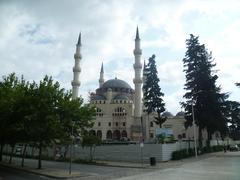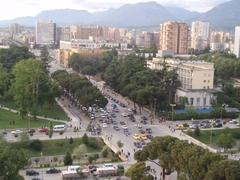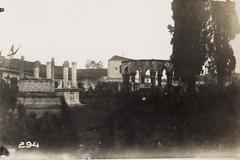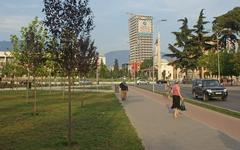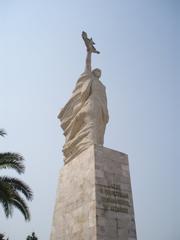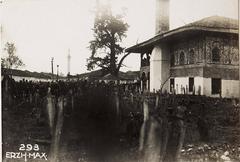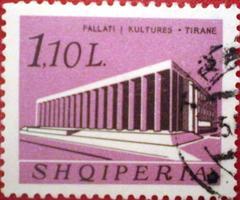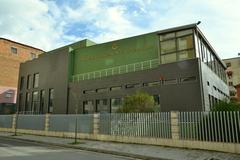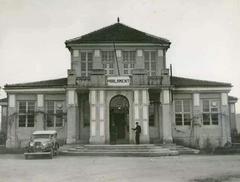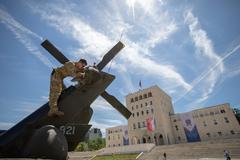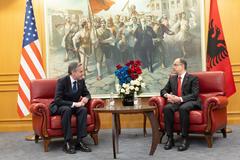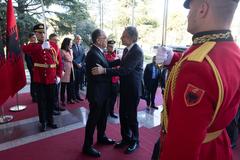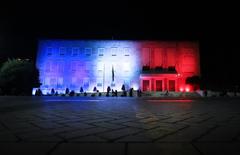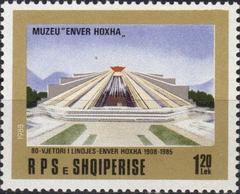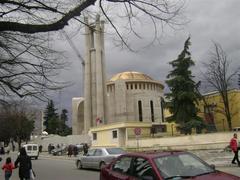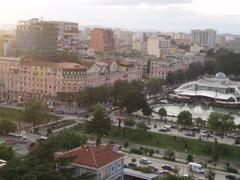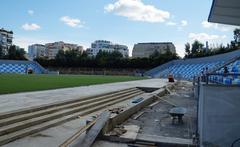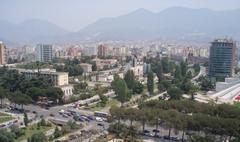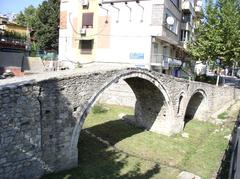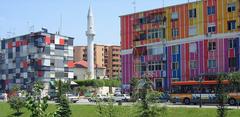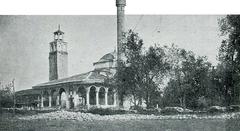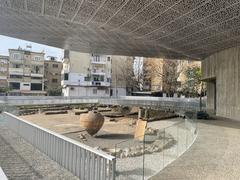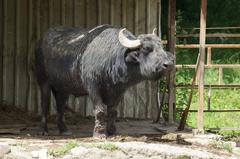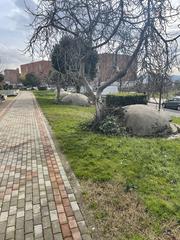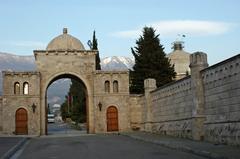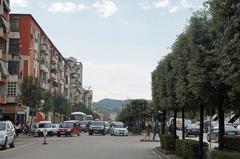Vitrina University Tirana: Visiting Hours, Tickets, and Travel Guide
Date: 15/06/2025
Introduction
Vitrina University, once a symbol of Albania’s educational transition, stands near Tirana as a testament to the country’s efforts toward academic modernization and European integration. Established in 2004, this private institution was part of a larger movement to diversify and internationalize higher education in post-communist Albania. Though the university ceased operations in 2014 following regulatory reforms, its campus remains accessible, offering visitors a unique opportunity to explore the intersection of Albania’s educational ambitions, urban development, and cultural evolution. This guide provides a comprehensive look at the university’s history, practical visitor details, and its lasting significance within Tirana’s vibrant landscape (dbpedia.org, Wikipedia, ETF, 2024).
Table of Contents
- History and Institutional Legacy
- Academic Structure and Regional Collaboration
- Closure and Its Implications
- Visiting Information: Hours, Access, and Tickets
- Campus Experience and Nearby Attractions
- Accessibility and Practical Tips
- Frequently Asked Questions (FAQ)
- Further Resources and Official Links
- Conclusion
History and Institutional Legacy
Vitrina University (Universiteti Vitrina) was founded in 2004 in Tirana by government decree no. 32.237 (Wikipedia). Its emergence coincided with a major expansion of private higher education in Albania, reflecting the nation’s desire to align with European standards, embrace multilingual instruction (Albanian, English, and German), and promote international cooperation.
Housed on a 20,000-square-meter campus near Citypark Albania, Vitrina University included facilities for higher education, a gymnasium (secondary school), and a continuing education center. This broad educational offering underscored its role in fostering lifelong learning and vocational skills, key priorities in Albania’s post-communist reforms.
The university quickly became recognized for its interdisciplinary programs and partnerships, notably as a member of the Balkan Universities Network. These affiliations facilitated joint research, student exchanges, and an infusion of international best practices (dbpedia.org).
Academic Structure and Regional Collaboration
Operating on a two-semester calendar (October–March, April–June), Vitrina University offered bachelor’s and master’s degrees across seven faculties, including law, economics, social sciences, engineering, and health sciences (Wikipedia). Its curriculum aimed to meet both national labor market needs and European educational benchmarks.
Membership in the Balkan Universities Network enabled Vitrina University to foster academic exchanges and research partnerships throughout the region, strengthening its reputation as a forward-thinking institution (dbpedia.org).
Closure and Its Implications
Despite its innovative approach, Vitrina University faced significant challenges regarding educational quality and regulatory compliance. In 2014, following an official inspection, the Albanian Ministry of Education revoked the university’s license as part of a nationwide initiative to enforce higher standards in private education (Wikipedia). The closure affected hundreds of students and highlighted systemic issues within Albania’s rapidly growing private university sector (ETF, 2024, Faktoje, 2024).
Today, the campus stands as a reminder of both the ambitions and obstacles that characterized Albania’s educational reforms in the early 21st century.
Visiting Information: Hours, Access, and Tickets
Location
The former Vitrina University campus is situated near the Citypark Albania shopping mall, just outside Tirana’s urban core and easily accessible via the Tirana-Durrës highway.
Visiting Hours and Entry
- General Access: The exterior campus area is accessible throughout the year. As the site no longer operates as an academic institution, there are no official ticketing, entrance fees, or regular guided tours.
- Viewing: Visitors may view and photograph the campus from public spaces. Access to the interior is generally restricted; those interested in specific events or private tours should consult local guides or community organizations.
- Best Time to Visit: Daylight hours (typically 9:00 AM–6:00 PM) are recommended for safety and the best photographic opportunities.
Campus Experience and Nearby Attractions
Campus Highlights
Although the university is no longer operational, visitors can appreciate its contemporary architectural design—a reflection of Albania’s educational ambitions during the 2000s. The student-centered layout, open green spaces, and modern facades are characteristic of this era.
Nearby Attractions
- Citypark Albania: A large shopping and entertainment complex adjacent to the campus.
- Skanderbeg Square: Tirana’s central plaza, home to museums, monuments, and vibrant street life.
- National History Museum: Showcasing Albania’s rich past.
- Bunk’Art Museums: Fascinating underground museums housed in Cold War bunkers.
- Et’hem Bey Mosque: An architectural gem in the city center.
These sites, in combination with the former Vitrina University campus, offer visitors a comprehensive view of Tirana’s educational, cultural, and historical dimensions.
Accessibility and Practical Tips
- Transport: The campus is accessible by car (with parking available at Citypark), taxi, and city or intercity buses (furgons) serving the Citypark area.
- Mobility: The campus grounds are generally flat and accessible, but interior access is limited.
- Language: Albanian is the primary language, but English is spoken in most tourism and academic contexts.
- Safety: Tirana is considered safe; standard travel precautions apply.
- Currency: Albanian lek (LEK); cash is preferred for small purchases.
- Wi-Fi: Available at Citypark and in most Tirana hotels and cafes.
Frequently Asked Questions (FAQ)
Can I visit the Vitrina University campus?
Yes, the exterior campus area is open to the public and can be viewed from nearby public spaces. Interior access is restricted.
Is there an entrance fee or ticket required?
No, there is no charge for visiting the exterior of the site.
Are guided tours available?
Official guided tours are not offered, but local guides may include the site in customized educational or cultural tours.
How do I get there?
By car, taxi, or public transport (bus or furgon) to Citypark Albania. The campus is a short walk from the mall.
Is the site accessible for visitors with disabilities?
The exterior grounds are generally accessible; however, specific services are limited due to the university’s closure.
What nearby attractions can I visit?
Citypark Albania, Skanderbeg Square, National History Museum, Bunk’Art museums, and Et’hem Bey Mosque.
Further Resources and Official Links
- Vitrina University on DBpedia
- Wikipedia – Universiteti Vitrina
- European Training Foundation, Albania Country Fiche 2024
- Faktoje, Education Crisis in Albania 2024
- Tirana Official Tourism Website
- Balkan Universities Network
- Audiala Travel App
- Vitrina University’s Facebook Page
Conclusion
Vitrina University’s story encapsulates a dynamic era in Albania’s educational and social transformation. Its rise and closure reflect the country’s aspirations for European integration, the challenges of rapid sectoral expansion, and the ongoing importance of quality assurance. For visitors, the campus offers a meaningful glimpse into Albania’s journey toward modern education, set against the backdrop of Tirana’s energetic urban life and rich cultural offerings.
To make the most of your visit, combine a stop at the former Vitrina University with explorations of the city’s historic sites and modern attractions. For up-to-date guides, event information, and curated tours, download the Audiala app and follow our channels for the latest on Tirana’s educational and cultural landscape.
